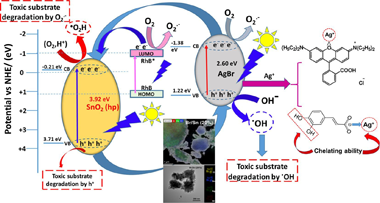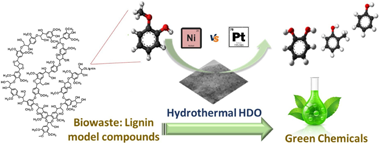Scientific Papers in SCI
2021
2021
Propiedades mecánicas, modelización y caracterización de cerámicos avanzados
The Possible Detriment of Oxygen in Creep of Alumina and Zirconia Ceramic Composites Reinforced with Graphene
Cano-Crespo, R; Rivero-Antunez, P; Gomez-Garcia, D; Moreno, R; Dominguez-Rodriguez, AMaterials, 14 (2021) 984
Show abstract ▽
This paper aims to give an answer to the following question: is the oxidation of graphene a critical issue for high-temperature plasticity in graphene-reinforced ceramics? To give a convincing reply, we will focus on two very different graphene-based ceramic composites: reduced graphene oxide (rGO)-reinforced alumina (alpha-Al2O3) and reduced graphene oxide (rGO)-reinforced yttria tetragonal zirconia (t-ZrO2). The processing of the powders has been made using a colloidal route, and after that, a spark plasma sintering process was performed in order to densify the samples. Creep tests were performed at temperatures between 1200-1250 degrees C in an argon atmosphere. The microstructure obtained by SEM of the sintered and tested specimens was characterized quantitatively to elucidate the deformation mechanism. Raman spectroscopy was carried out to check the integrity of the graphene. The average grain size was in the order of 1 mu m and the shape factor was 0.7 for all the studied materials. The integrity of the graphene was checked before and after the creep experiments. The careful analysis of the creep tests shows that graphene oxide or its reduced version are not efficient phases for creep resistance improvement in general, contrary to what is reported elsewhere. However, the results permit the suggestion of a creep improvement in nanocomposites at a very high temperature regime due to an enhanced reactivity of oxygen between carbon and alumina interfaces. In the case of zirconia, the results give us the conclusion that the oxidation of graphene is a highly detrimental issue regarding the improvement of high-temperature plasticity.
February, 2021 | DOI: 10.3390/ma14040984
Reactividad de Sólidos
A Novel, Simple and Highly Efficient Route to Obtain PrBaMn2O5+δ Double Perovskite: Mechanochemical Synthesis
Garcia-Garcia, FJ; Sayagues, MJ; Gotor, FJNanomaterials, 11 (2021) 380
Show abstract ▽
In this work, a mechanochemical route was proposed for the synthesis of the PrBaMn2O5+δ (PMBO) double layered perovskite phase. The mechanochemical reaction between Pr6O11, BaO2, and MnO powders with cationic stoichiometric ratios of 1/1/2 for Pr/Ba/Mn was performed using high-energy milling conditions in air. After 150 min of milling, a new phase with perovskite structure and cubic symmetry consistent with the A-site disordered Pr0.5Ba0.5MnO3 phase was formed. When this new phase was subsequently annealed at a high temperature in an inert Ar atmosphere, the layered PrBaMn2O5+δ phase was obtained without needing to use a reducing atmosphere. At 1100 °C, the fully reduced layered PrBaMn2O5 phase was achieved. A weight gain was observed in the 200–300 °C temperature range when this fully reduced phase was annealed in air, which was consistent with the transformation into the fully oxidized PrBaMn2O6 phase. The microstructural characterization by SEM, TEM, and HRTEM ascertained the formation of the intended PrBaMn2O5+δ phase. Electrical characterization shows very high electrical conductivity of layered PBMO in a reducing atmosphere and suitable in an oxidizing atmosphere, becoming, therefore, excellent candidates as solid oxide fuel cell (SOFC electrodes).
February, 2021 | DOI: 10.3390/nano11020380
Fotocatálisis Heterogénea: Aplicaciones
Enhanced UV and visible light photocatalytic properties of synthesized AgBr/SnO2 composites
Puga, F.; Navío, J.A.; Hidalgo, M.C.Separation and Purification Tecnology, 257 (2021) 117948
Show abstract ▽

Composites (AgBr/SnO2) comprised of AgBr and SnO2 with different molar % of bare SnO2, have been synthesized by simple precipitation methods; the bare SnO2 used, was synthesized by hydrothermal procedure. Samples have been characterized by X-ray diffraction (XRD), N2-adsorption, UV–vis diffuse reflectance spectroscopy (DRS), scanning electron microscopy (SEM), Transmission electron microscopy (TEM) and X-ray photoelectron spectroscopy (XPS). Photocatalytic activity of the as-prepared photocatalysts was evaluated through photocatalytic degradation of rhodamine B (RhB) and caffeic acid (CAFA) under UV and Visible illumination. In photocatalytic degradation studies, for both substrates, conversion rates of around 95% were found in 45 min of both UV-illumination and 85% under visible lighting. These conversion rates were superior than the conversion rates of pure parental components, AgBr and SnO2 under the same experimental conditions. At least, for RhB no loss of photocatalytic activity has been observed after five recycles although the mineralization degree progressively diminished along the recycles. The enhanced photocatalytic degradation of AgBr/SnO2 compounds was attributed, in part, to a synergistic increase in adsorption viability, as well as to the effective separation of photoinduced load carriers that resulted from the formation of a heterojunction according to the type II junction. Radical scavengers’ experiments indicated that active oxidant species as O2.−, ·OH and h+ all are involved in this photocatalytic system, although it seems that O2.− played the major role in the photocatalytic degrading of RhB by AgBr/SnO2 composites. In summary, coupling AgBr with SnO2 remarkably improves the photocatalytic activity under both UV and visible-illumination with respect to the parental components. These features open the route to future applications of this material in the field of environmental remediation.
February, 2021 | DOI: 10.1016/j.seppur.2020.117948
Reactividad de Sólidos
Influence of Successive Chemical and Thermochemical Treatments on Surface Features of Ti6Al4V Samples Manufactured by SLM
Gonzalez, JE; de Armas, G; Negrin, J; Beltran, AM; Trueba, P; Gotor, FJ; Peon, E; Torres, YMetals, 11 (2021) 313
Show abstract ▽
Ti6Al4V samples, obtained by selective laser melting (SLM), were subjected to successive treatments: acid etching, chemical oxidation in hydrogen peroxide solution and thermochemical processing. The effect of temperature and time of acid etching on the surface roughness, morphology, topography and chemical and phase composition after the thermochemical treatment was studied. The surfaces were characterized by scanning electron microscopy, energy dispersive X-ray spectroscopy, X-ray diffraction and contact profilometry. The temperature used in the acid etching had a greater influence on the surface features of the samples than the time. Acid etching provided the original SLM surface with a new topography prior to oxidation and thermochemical treatments. A nanostructure was observed on the surfaces after the full process, both on their protrusions and pores previously formed during the acid etching. After the thermochemical treatment, the samples etched at 40 °C showed macrostructures with additional submicro and nanoscale topographies. When a temperature of 80 °C was used, the presence of micropores and a thicker anatase layer, detectable by X-ray diffraction, were also observed. These surfaces are expected to generate greater levels of bioactivity and high biomechanics fixation of implants as well as better resistance to fatigue.
February, 2021 | DOI: 10.3390/met11020313
Química de Superficies y Catálisis
Guaiacol hydrodeoxygenation in hydrothermal conditions using N-doped reduced graphene oxide (RGO) supported Pt and Ni catalysts: Seeking for economically viable biomass upgrading alternatives
Parrilla-Lahoz, S; Jin, W; Pastor-Perez, L; Carrales-Alvarado, D; Odriozola, JA; Dongil, AB; Reina, TRApplied Catalysis A-General, 611 (2021) 117977
Show abstract ▽

Herein we present an innovative route for model biomass compounds upgrading via “H2-free” hydrodeoxygenation (HDO) reactions. The underlaying idea is to implement a multifunctional catalyst able to activate water and subsequently use in-situ generated hydrogen for the HDO process. In this sense we have developed a series of effective Ni and Pt based catalysts supported on N-promoted graphene decorated with ceria. The catalyst reached commendable conversion levels and selectivity to mono-oxygenated compounds considering the very challenging reaction conditions. Pt outperforms Ni when the samples are tested as-prepared. However, Ni performance is remarkably boosted upon applying a pre-conditioning reductive treatment. Indeed, our NiCeO2/GOr-N present the best activity/selectivity balance and it is deemed as a promising catalyst to conduct the H2-free HDO reaction. Overall, this “proof-concept” showcases an economically appealing route for bio-compounds upgrading evidencing the key role of advanced catalysts for a low carbon future.
February, 2021 | DOI: 10.1016/j.apcata.2020.117977
- ‹ previous
- 85 of 410
- next ›














